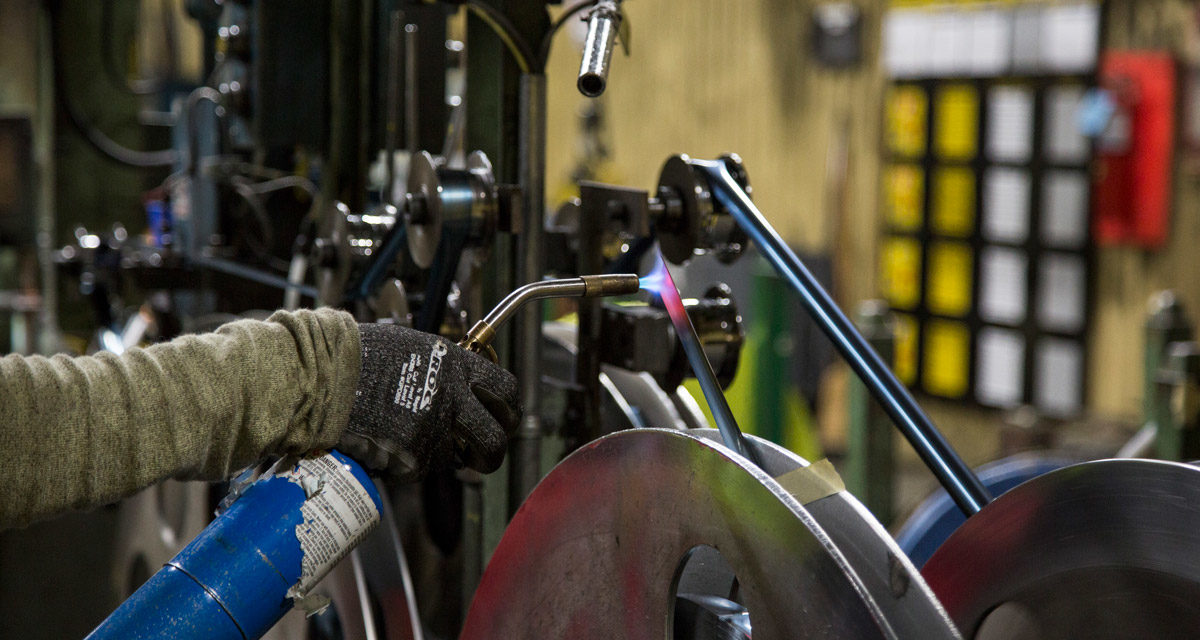From giant corporations founded hundreds of years ago to four-man shops less than 10 years old, it gets made in Connecticut
“You’re not famous until they put your head on a PEZ dispenser,” reads a button from the PEZ Candy company.
PEZ is short for peppermint in German and was created in Connecticut as a breath mint in 1927. Its iconic box dispenser was launched 20 years later and designed to work like a cigarette lighter to help people quit smoking.
And it’s just one of many products you use every day made in the Nutmeg State.
Connecticut manufacturing is thriving. Its jet engines dominate the skies while its submarines patrol the seas. Medical ventilators save lives while hydrogen electrolyzers save the planet. Builders use its tools, wear its jeans and relax over its craft beer.
And for products giving our lives a sense of whimsey and fun, look to Connecticut for its Wiffle Balls, BIC Lighters and – yes – PEZ.
The stories behind these products and their companies paint a vivid picture of a diverse and thriving industry.
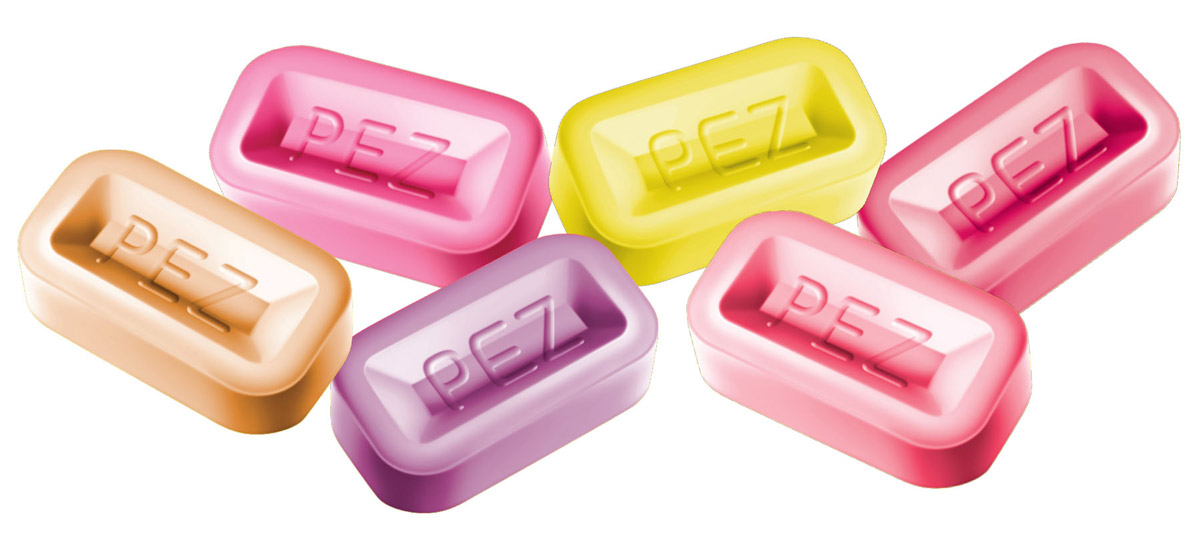
PEZ Candy
Who makes it: PEZ Candy
Where: Orange
Founded: 1927
How they make it: Sugar and flavoring are combined in a mixer then the powder is molded by high-pressure machines into the tablet-shaped candies.
Employees: 150
How much it costs: $1.79-$2.49 for one pack
Who uses the product: Who doesn’t like PEZ?
“Star Wars is one of the most popular licensed PEZ assortments of all time, and Disney is our longest-standing license,” says Shawn Peterson, the company’s direct to consumer business manager. Over 3 billion PEZ candies are consumed annually in the U.S. alone and the product is distributed in more than 60 countries.
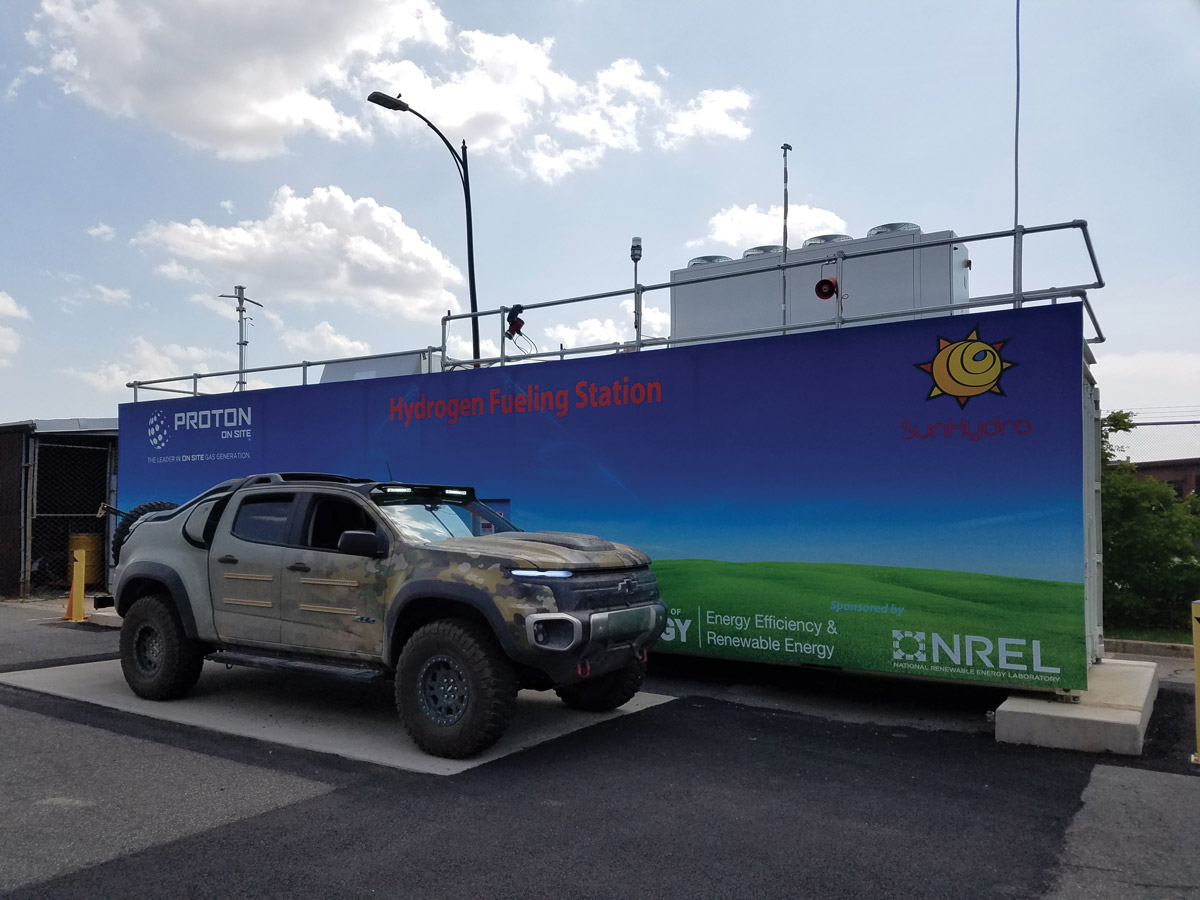
Sending astronauts to the moon would not have been possible without hydrogen fuel cells. They produce electricity from the electrochemical reaction of hydrogen and oxygen. The only byproduct is water.
Proton OnSite’s hydrogen generating units are used around the world to power hydrogen fuel cells for another mission – reducing greenhouse gases that contribute to global warming.
“Our technology is being used to fuel hydrogen fuel cell vehicles,” says President Robert Friedland.
Commercial airlines can fly longer routes, carry more passengers and slash spending on fuel with Pratt & Whitney’s geared turbofan engine.
GTF engines burn 16 percent less fuel, which provides airlines with significant savings. “The engines will save about $1.5 million per airplane per year,” says Mike McCune, the design manager for Fandrive Gear Systems.. The engines also generate 50 percent fewer emissions and create 75 percent less noise on the ground so carriers pay lower noise fees and can cross over residential areas that are no-fly zones for other planes.
Hydrogen electrolyzers
Who makes it: Proton OnSite
Where: Wallingford
Founded: 1996
Employees: 82 in Connecticut
How they make it: Proton OnSite electrolyzers incorporate a proton exchange membrane to separate the hydrogen from the oxygen during the electrolysis process.
How much it costs: $6,000 to $3.5 million
Who uses the product: Businesses and consumers in 75 countries.
The company is the world’s leading manufacturer of hydrogen electrolyzers with products ranging from appliance-size equipment for small-scale production to plant-size equipment for large-scale production. “States such as California have overproduction of solar and wind during the middle of the day. They’ve had to dump gigawatt-hours of power,” says Friedland. “Our electrolyzers can store that excess power as hydrogen.”
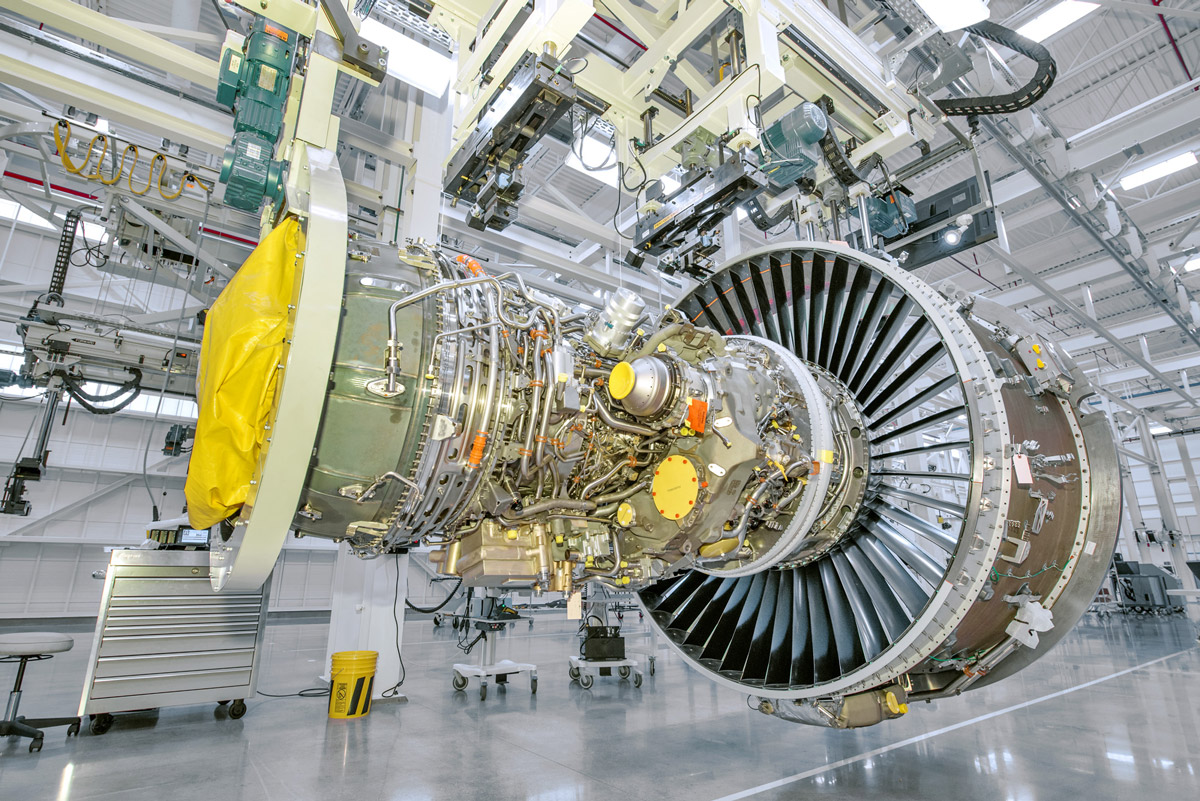
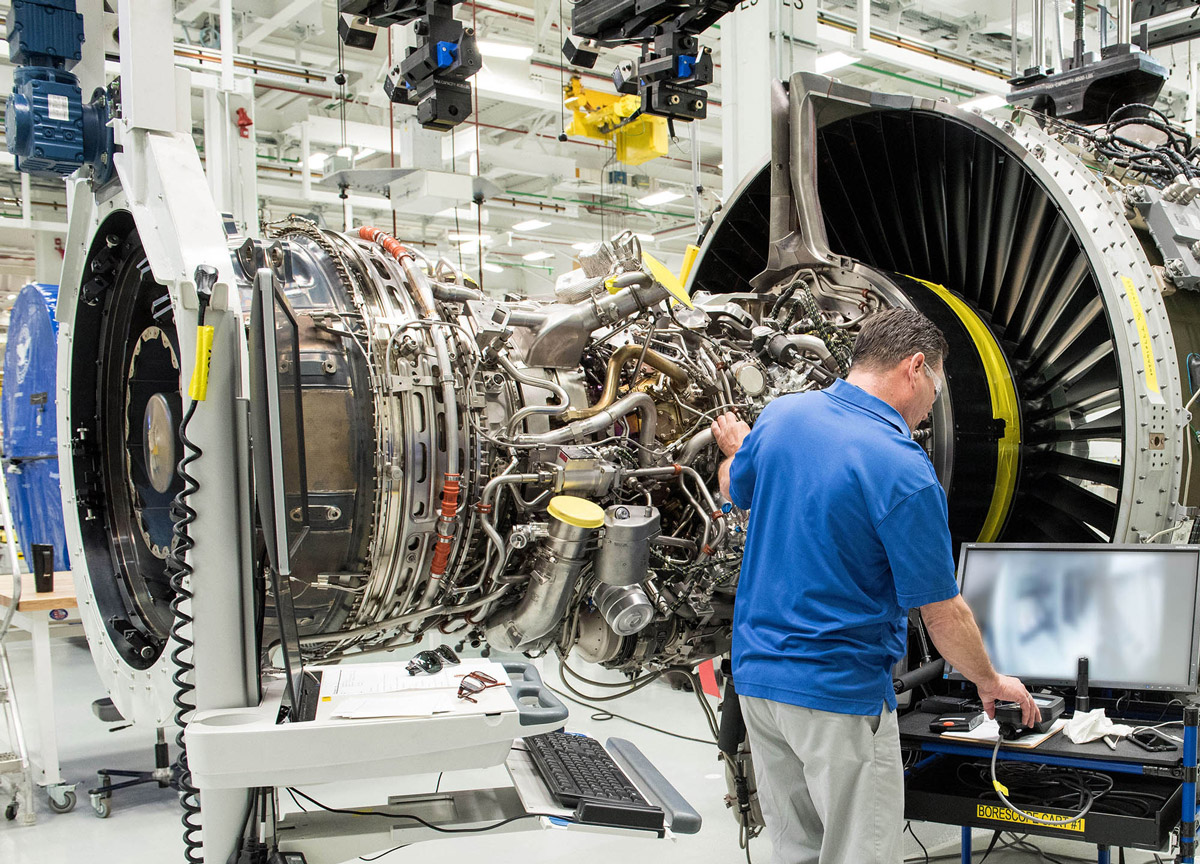
Jet Engines
Who makes it: Pratt & Whitney
Where: East Hartford and Middletown
Founded: 1925
How they make it: Each jet engine contains roughly 2,000 parts. Geared Turbofan engines have a revolutionary 3:1 reduction gear on the shaft connecting the fan blades to the compressors and turbines.
Employees: 31,500, with 9,000 in Connecticut
How much it costs: Millions for larger commercial engines
Who uses the product: Commercial airlines, militaries and businesses around the world
More than 20 years and $10 billion went into the redesign of Pratt’s new geared turbofan engine to increase efficiency. “Over the course of Pratt & Whitney’s 90-plus year history, one element of the culture has always stood out, and that is our dedication to pushing limits and going beyond to find the next great innovative step forward,” says Pratt & Whitney’s President Bob Leduc.
Some owners put their faces on their product labels, but Beer’d Brewing Company owner Aaren Simoncini features his facial hair. “I had my beard and my friends called me the beard brewing company,” he says.
At the time, Simoncini had a day job he wasn’t too fond of and was brewing beer as a hobby. His partner Precious Putnam and his mother bought him his first home brew kits and a kettle. Simoncini and Putnam put together some creative financing to start the brewery.
“We wanted to avoid bank loans so we created a Founders Club Membership,” says Putnam.
David Mullany’s grandfather was 45 and out of work when he came up with the idea for the Wiffle Ball.
“He saw my dad and his buddies in the backyard playing a game with a little plastic golf ball and a broomstick,” he says.
Trying to make a ball that would curve easily, the two Mullanys started experimenting with different designs using plastic spheres that came from perfume packaging made by a Connecticut company.
Mullany’s grandfather took a mortgage out on the house, borrowed some money from family and friends, and started the company. Neighborhood kids called a strikeout a “wiff” which led to the “Wiffle” brand name.
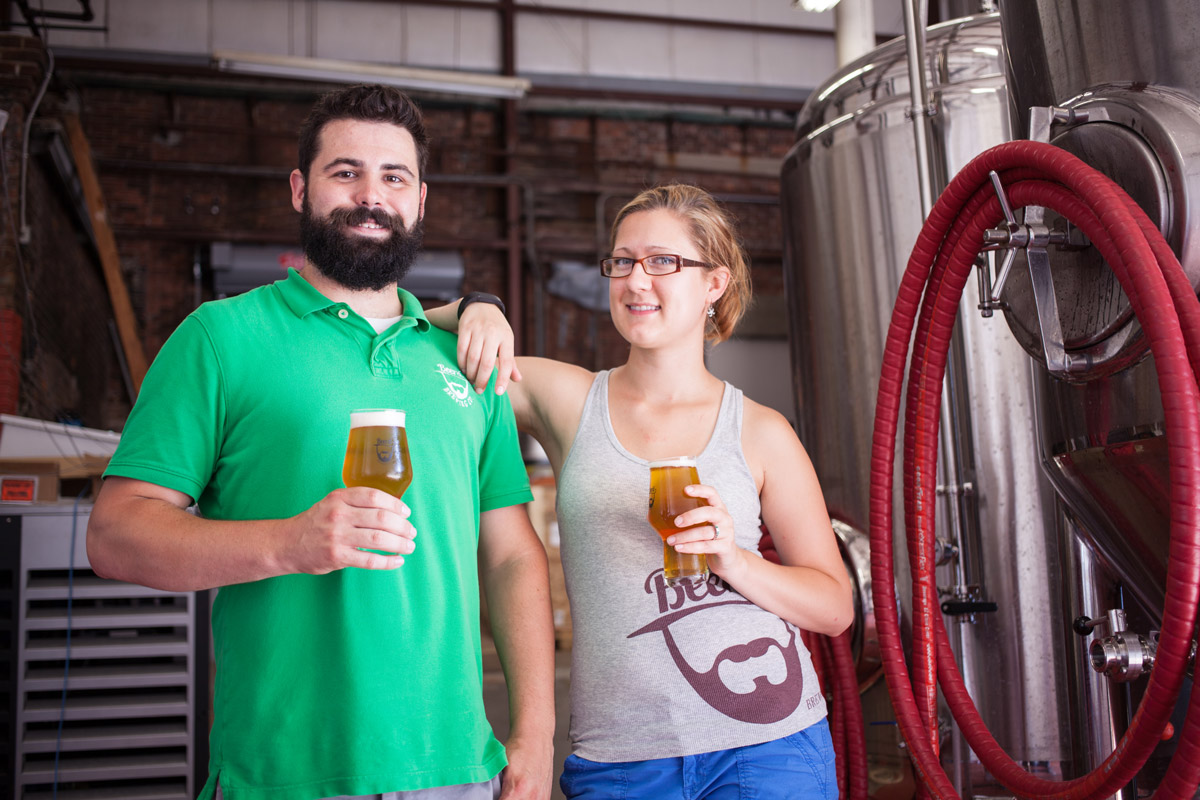
Beer
Who makes it: Beer’d Brewing Company
Where: Stonington
Founded: 2012
Employees: 14
How they make it: Malted barley is mixed with hot water, the liquid is filtered, then boiled with hops in a brew kettle. After cooling, it is mixed with yeast in a fermenter, then aged.
How much it costs: $5 pints, $5.50-$8.50 for 32 oz., $11-$17 for 64 oz., $10-$15 for a 4-pack of 16 oz. cans
Who uses the product: Anyone who is 21 years of age and older
Brews are creative and so are their names: “Dogs and Boats” is an Imperial IPA, “Hobbit Juice” is a single-hopped floral beer and “Whisker’d Wit” is a dry, highly carbonated beer that uses a Trappist ale yeast.
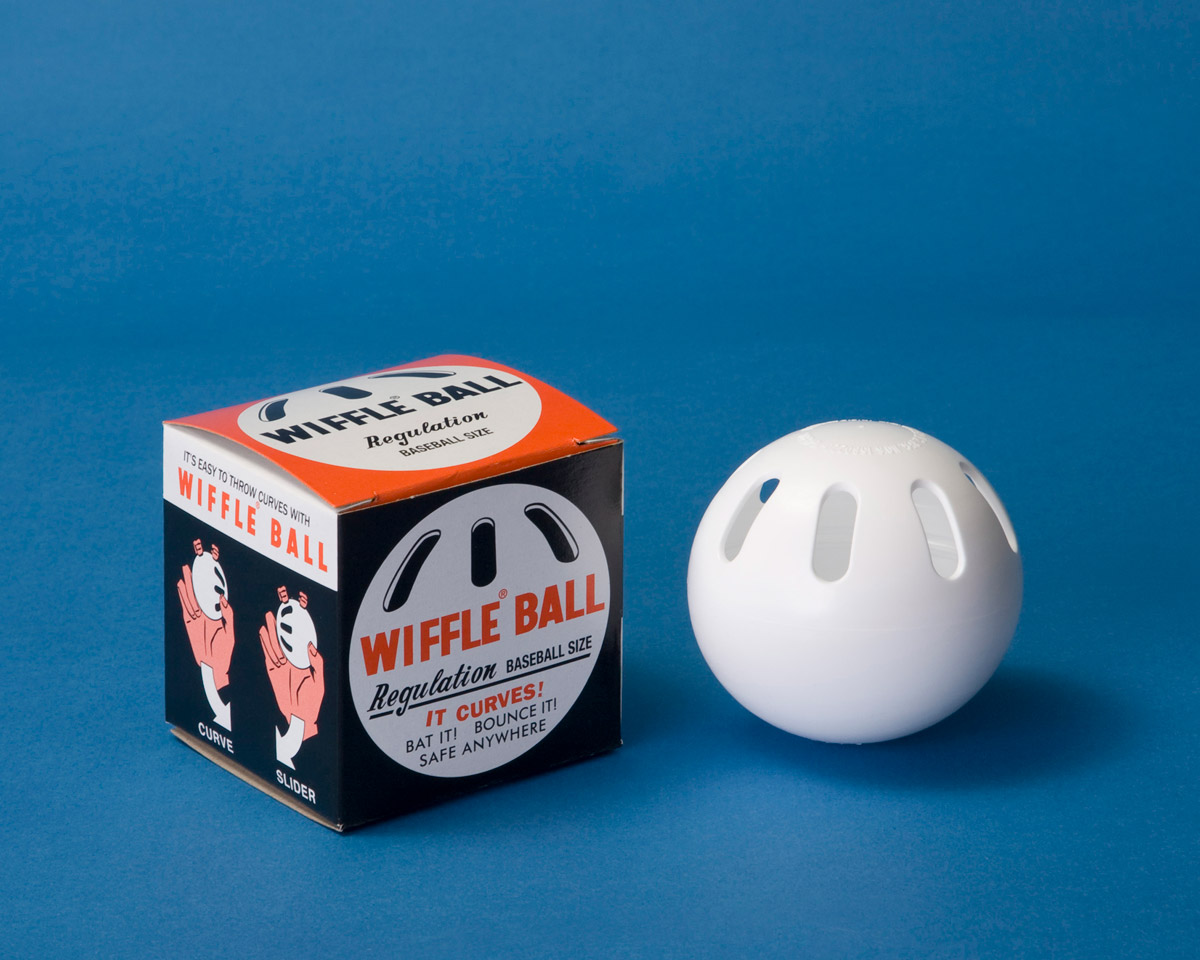
Wiffle Balls
Who makes it: The Wiffle Ball, Inc.
Where: Shelton
Founded: 1954
Employees: 15-20
How they make it: Polyethylene pellets are fed into an injection molder that makes the finished halves of the ball. Sealing equipment puts the two halves together.
How much it costs: Under $2 for a single Wiffle Ball
Who uses the product: Kids and anyone who is a kid at heart
A yellow plastic bat was added to the line in 1972. Otherwise, the product has remained largely unchanged.
Hartford Denim Company’s three founders, Luke Davis, Marshall Deming and Dave Marcoux, grew up shopping in thrift stores and going to tag sales. Most of the clothes they wore in high school were vintage or Carhartt work pants.
Each pair of Hartford Denim jeans is hand-sewn on vintage industrial sewing machines. The fabric comes from Cone Denim in North Carolina.
“The salvaged denim is woven on antique shuttle looms,” says Marcoux. “They are the only mill left in America producing selvedge denim.”
Hartford Denim’s mission is to preserve American craft and manufacturing traditions that would otherwise be lost.
“We’re making the vintage jeans of the future,” says Marcoux.
General Dynamics Electric Boat built the first nuclear ballistic missile submarine in 1959 and its Ohio Class submarines currently comprise the sea-based leg of the U.S. nuclear triad – a defense system that distributes nuclear weapons on land, air and sea to prevent the nation’s nuclear forces from being destroyed in the event of a first-strike attack.
“Each ballistic missile submarine is armed with up to 24 Trident II missiles. They are our nation’s most secure and survivable nuclear deterrent,” says Director of Communications Liz Power.
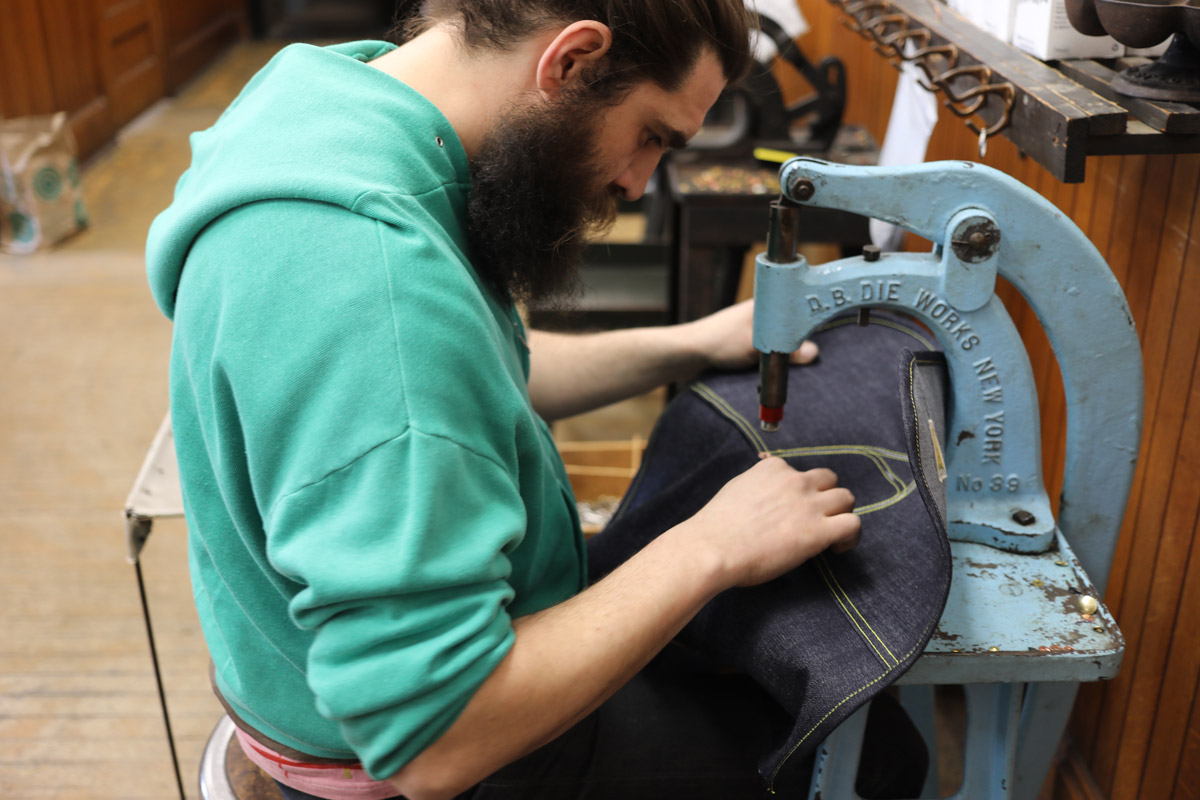
Jeans
Who builds it: Hartford Denim Company
Where: Hartford
Founded: 2010
Employees: 4
How they make it: It takes nearly 50 steps to make one pair of handmade jeans. Cloth is cut, then sewn on vintage industrial sewing machines. Rivets and buttons are attached with an old press from Scovill Manufacturing in Waterbury.
How much it costs: About $285 off the rack
Who uses the product: Tradespeople, vintage lovers and anyone who gives a damn.
Many repeat customers are tradespeople. Co-founder Dave Marcoux says they view their jeans as tools because repairs are guaranteed for life. “You appreciate the product when you’ve worn the same pair of jeans for a month and have been beating them up every day,” says Marcoux. “We’ve got one customer who repairs bridges and he swears by them. He’s probably got four pairs.”
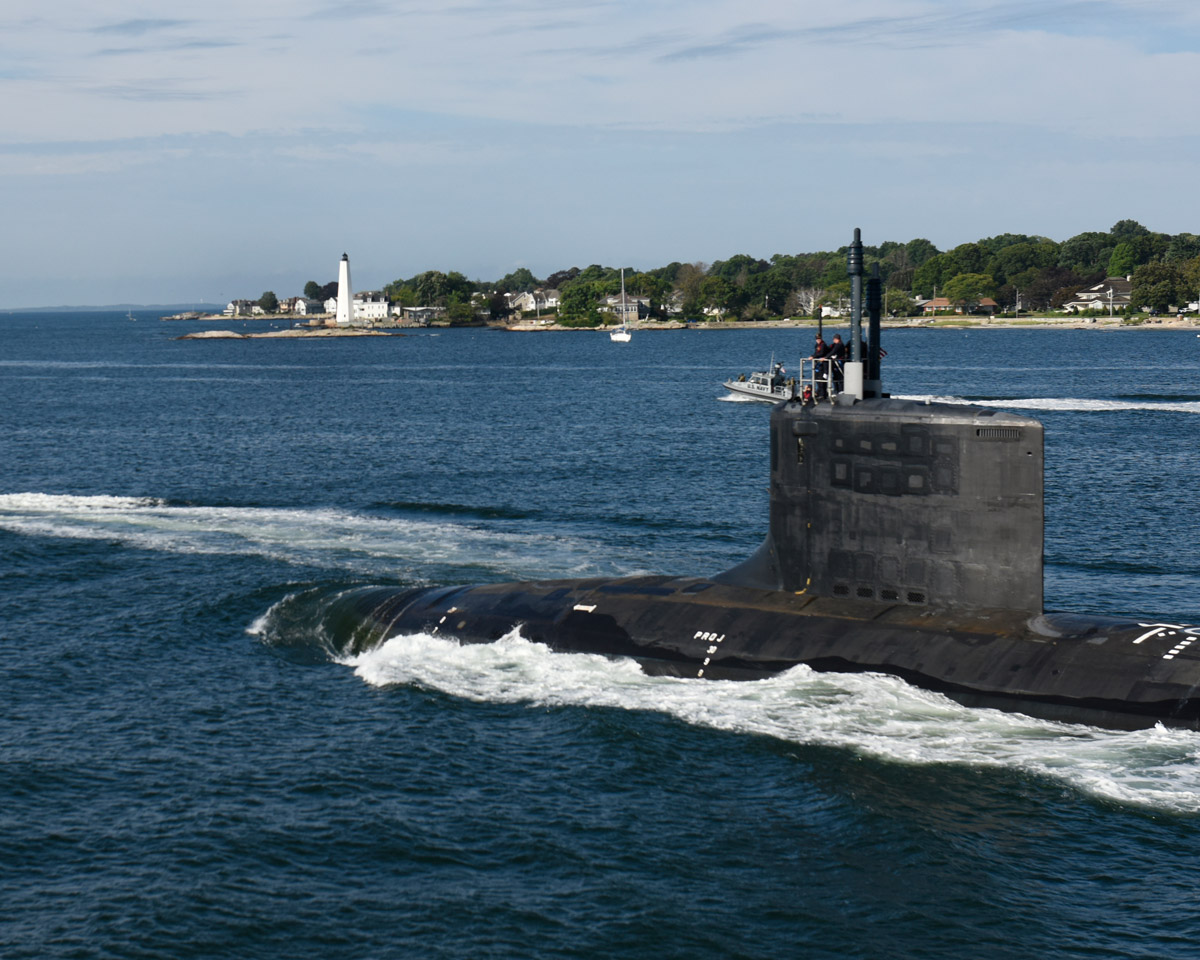
Submarines
Who builds it: General Dynamics Electric Boat
Where: Groton
Founded: 1899
Employees: Over 15,000 with 10,000 in Connecticut
How they make it: Large portions of prebuilt and tested equipment assemblies called rafts are constructed outside of the hull and then inserted into hull sections to form modules. Modules are then joined together to form the finished submarine.
How much it costs: $5 billion for a Columbia Class submarine, $1.7 billion for a Virginia Class submarine
Who uses the product: The U.S. Navy
Electric Boat’s USS Holland, commissioned in 1900, was the first modern U.S. Navy submarine. The company provided more submarines to the U.S. fleet than any other shipyard during World War II. “In the Pacific Campaign, submarines sank 55 percent of all enemy vessels while comprising just 1.6 percent of Navy ships,” says Director of Communications Liz Power.
Stanley Black & Decker is famous for innovation, introducing the world’s first retractable tape measure in 1931. It was called a push-pull tape and had a spring clip to hold the tape in position.
This convenience was crucial for astronauts whose mobility was limited by their space suits.
“The PowerLock tape was included in Apollo 11’s lunar landing gear in 1969 and today we sell millions of tape measures a year, with many of them manufactured in New Britain,” says Chirag Kamani, Director of Engineering, Stanley Black & Decker.
The BIC Lighter, launched in 1973, is a worldwide leader in producing a safe, reliable flame for millions of consumers every day. Its unique shape was designed to fit comfortably in the palm of your hand. Each full-sized BIC flint lighter provides up to 3,000 lights for less than two dollars.
“The BIC Lighter is iconic. It is trusted around world for its quality, safety and reliability, and has been featured in museums worldwide, including the Museum of Modern Art in New York,” says Rob Miller, senior corporate communications manager.
Transport ventilators, like those made by Bio-Med Devices, Inc., can mean the difference between life and death in a medical emergency.
The company’s TV-100 can be used in a variety of settings from air and ground transport to the emergency department, ICU or for subacute care.
Operators can easily select the appropriate ventilation mode using the color touchscreen display.
“There is a simple setup assistant to get ventilation up and running fast, when seconds count,” says President Dean Bennett. ◾
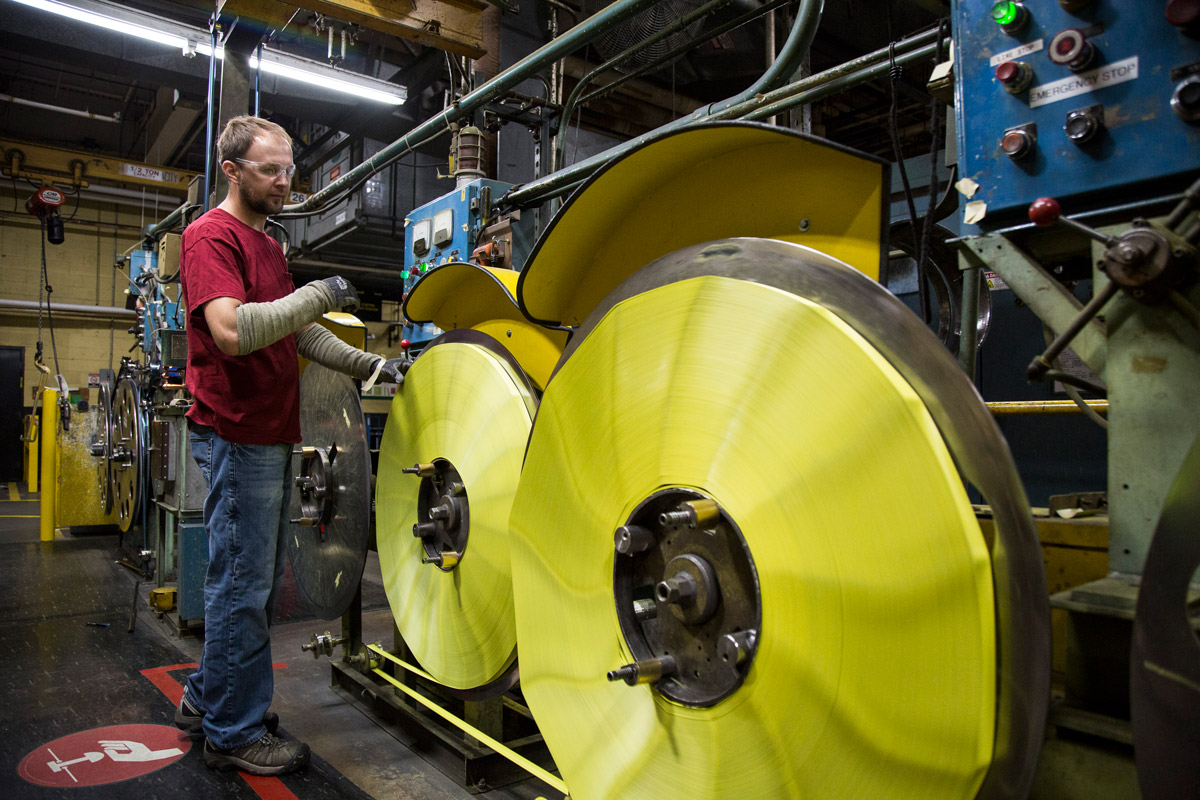
Tape Measures
Who makes it: Stanley Black & Decker
Where: New Britain
Founded: 1843
How they make it: Steel is cut to exacting specifications, painted, printed and rolled. Springs are attached to automatic winding mechanisms then combined with the tape in a casing.
Employees: Over 1,500 in Connecticut, more than 54,000 worldwide
How much it costs: $7 for a 16-foot long, quarter-inch wide tape
Who uses the product: DIYers to professional tradespeople
Founded in 1843 by Frederick Stanley, New Britain’s Stanley Works manufactured bolts, hinges and other hardware out of an armory used in the War of 1812. It merged with Black & Decker in 2010 and continues to grow. Today, it is the world’s largest tools and storage company, the second largest commercial electronic security company, and a leading provider of engineered fastening systems.
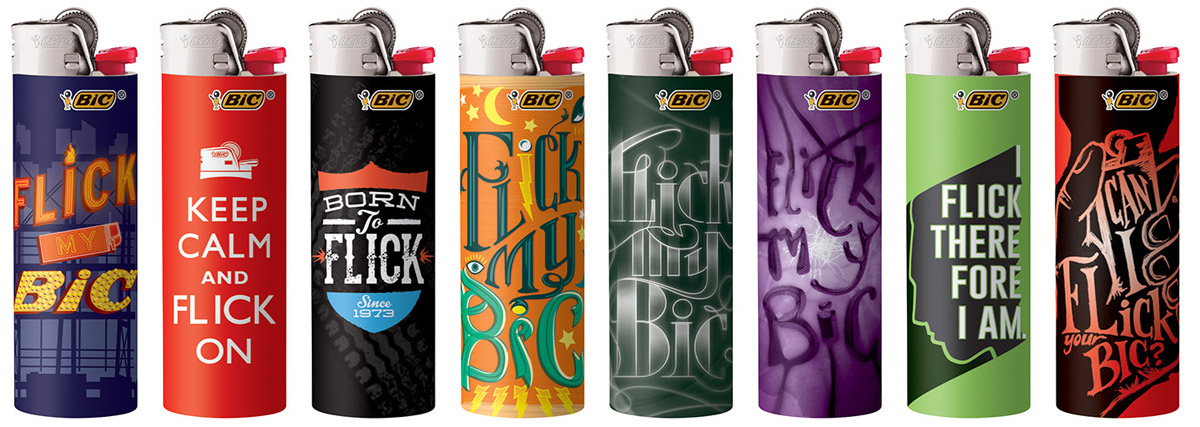
BIC Lighters
Who makes it: BIC
Where: Milford
Founded: 1945
Employees: Approximately 190
How they make it: The full-size BIC Lighter has 19 components, molded, produced and assembled following a custom-made process according to exact quality standards.
How much it costs: Suggested retail price $1.79
Who uses the product: Anyone who wants to “Flick their BIC!”
Milford is home to the U.S. manufacturing facility for BIC Lighters, where 1.2 million lighters are manufactured each day using one of the most modern manufacturing processes in the world. Every BIC Lighter undergoes more than 50 separate, automatic quality checks during the manufacturing process to ensure that the lighter performs properly before it leaves BIC’s factory.
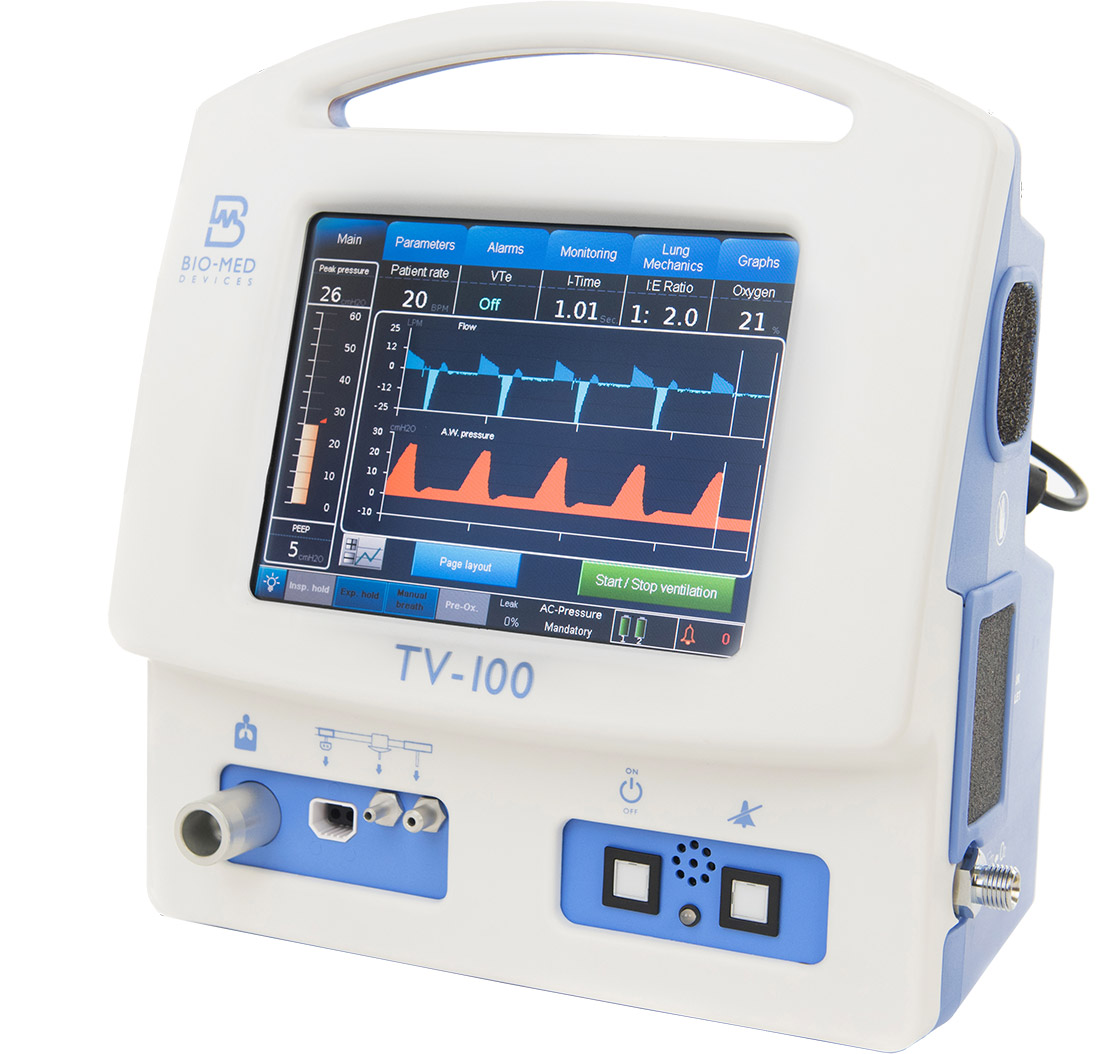
Medical Ventilators
Who makes it: Bio-Med Devices, Inc.
Where: Guilford
Founded: 1973
Employees: 75
How they make it: After in-house engineering and design work is completed, the PC board, touch screen, valves, turbine and case are ordered. Components are assembled and tested in house.
How much it costs: $12,000-$16,000 for a TV-100 model
Who uses the product: Hospital and EMS personnel
Bio-Med Devices has been providing transport ventilators for the medical field since the early 1970s. Its new TV-100 Ventilator offers versatile support. “It provides coverage for the smallest premature infant to the largest adult,” says President Dean Bennett.

